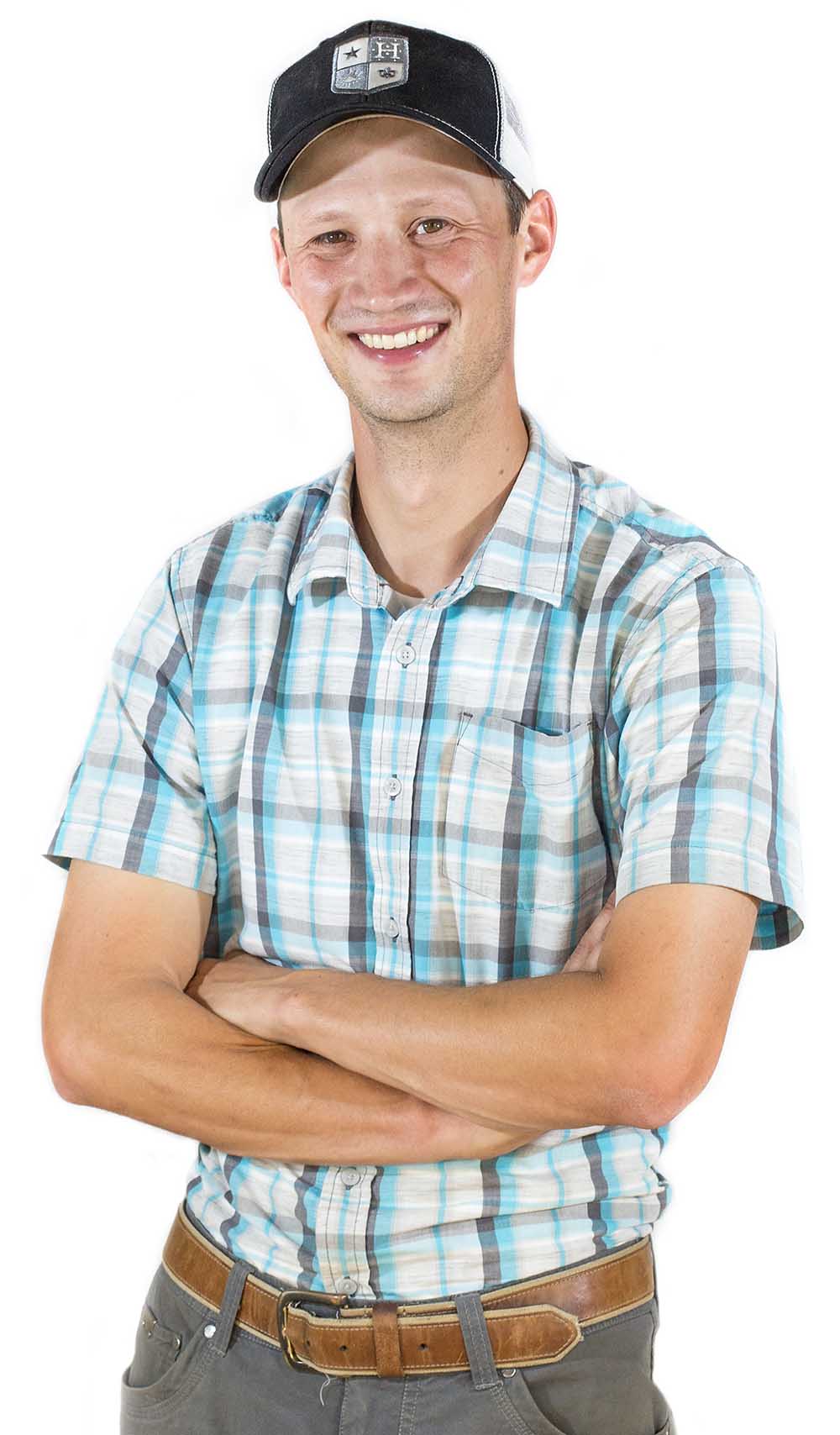family background / James grew up in Woodinville, Washington, and earned an environmental science degree from the University of Idaho. After his degree, he toured California vineyards and fell in love with farming, diving into viticulture courses at Walla Walla Community College.
age / 34
crops / Grapes
business / Vineyard manager at Hedges Family Estate
 How did you get your start?
How did you get your start?
I didn’t know much about Washington wines before entering Walla Walla Community College. How I got into this industry is a little odd. Most people I know in this industry have a degree in viticulture.
When I was in college, I didn’t know that a degree path in viticulture and enology existed. After college, I was ready to get out into the field.
As a vit-tech, you kind of learn the basic stuff — counting clusters, bud counting and insect scouting.
When I got into the management program at Chateau Ste. Michelle, I learned how to manage a crew and run daily chores out in the field.
Each opportunity, I’ve expanded my knowledge and I’ve always looked back at my experiences from previous jobs to help me succeed in my current job.
What kind of technology are you using in the field?
We’re out there trying to produce the best crop possible — from each site, block, down to each row.
Every client wants something a bit different in the grapes and that challenge is tough. With how today’s world is facing more frequent droughts, we have to find ways to make more efficient water management decisions.
Pressure chambers, neutron probes and drone imagery can help you make efficient irrigation strategies.
Other things we could be doing in the future are using NDVI to help monitor water stress or changing our irrigation and pruning strategies — maybe we’ll drop fruit in a certain area that has more vigor, or we won’t send a crew through one block at a time and instead send them to very specific spots, all of which could keep your farming costs down.
What challenges are you working on?
The big challenges involve labor and the effort to become mechanized.
I’m seeing tractors with new technology, but we need to update our older vineyards, change trellis systems — and that’s a big challenge.
We have a Merlot block that has 10-inch cross arms that cannot be machine picked. We are planning to go through and change out that trellis system, removing the cross arms, then change our pruning style too.
It currently is more of a sprawl, and we’ve been working down to more of a VSP, vertical shoot position system, so the machines can pick easier and cleaner.
What we’ve found is that some of these new harvesters pick nice and clean and winemakers are saying it helps them bypass a step in the winery — because the machines destem out in the field.
Our winemaker loves the results. As of right now we’re nearly 60 percent machine picked.
What about organic or biodynamic farming?
What I’m passionate about, with my background in environmental science, is creating biodiversity out in the field.
I think that’s key because you can reduce your cost of pesticides and fungicides. It helps creates a sustainable ecosystem in the vineyard. The way I think about it, you are building a marathon runner in your vines.
You’re making them stronger by building that base, building that soil up, building that root system, building an ecosystem that is biodiverse.
The blocks might not look the best at all times, but you know you’re helping the plants to not rely on insecticides. It’s a different way to farm, and what we’ve seen is stronger plants.
What have you learned about transitioning to biodynamic methods?
I’ve farmed at places where two sites were conventional and two others were biodynamic, and one site in transition. The two that have been biodynamic for a couple years now are visually stronger looking.
The fruit is also different from the two conventional sites. The one that’s in transition this year doesn’t look that good this year, but we know we are building it up to become stronger, naturally.
It’s a three-year transition and we expect it to get stronger each year, just like a marathon runner in training.
The conventional sites are still reliant on what we do to them, and in biodynamics, you kind of let the plant do what it must do. You have to keep an open mind, which is a bit difficult at times.
What should young growers know today?
Younger growers need to get out in the field. You might see something in a book, but out in the field it might be 100 percent different.
You need to be hands-on, doing the shoot thinning, being out with the crew. That’s how I’ve gained my experience.
But also they need to be learning GIS mapping, surveying fields. With the new technology available, there are sites we might never have planted five to 10 years ago, but now we are because of what tech is helping us achieve.
If you have the drive to work in agriculture, you can.
– by TJ Mullinax






Leave A Comment